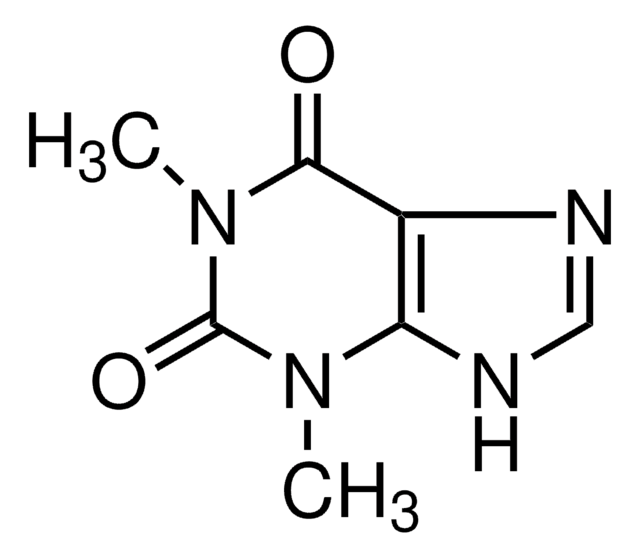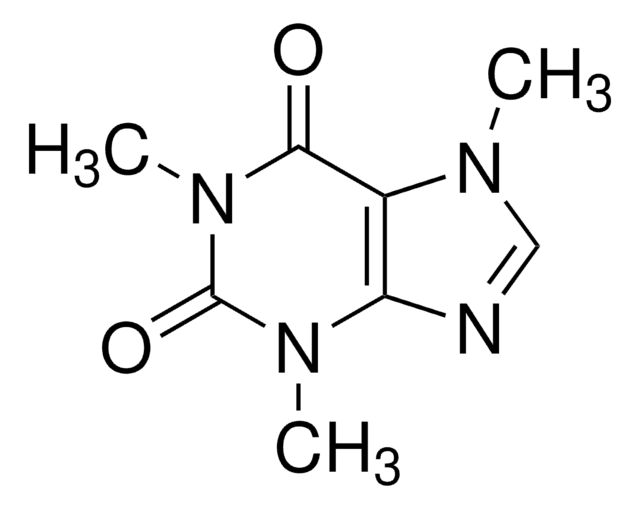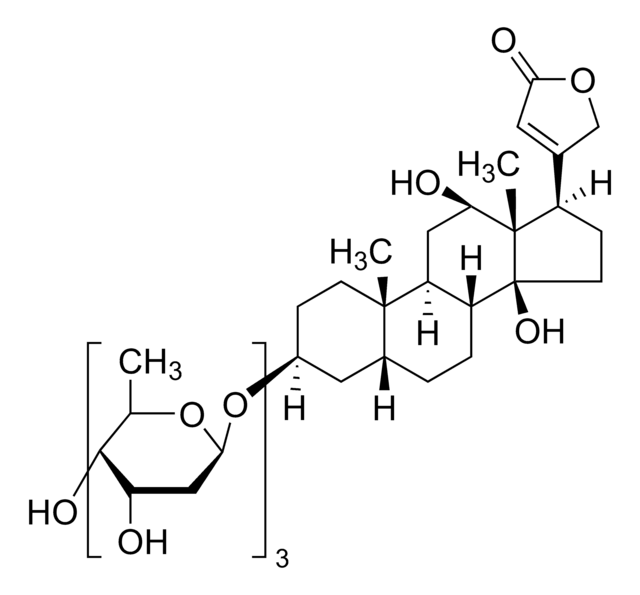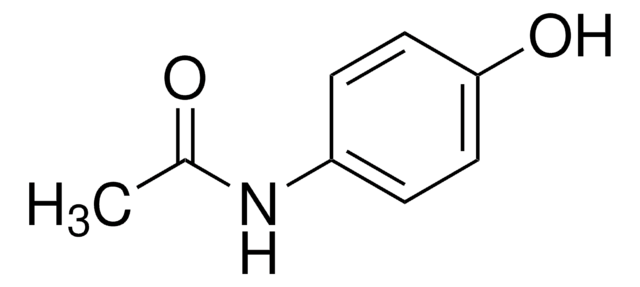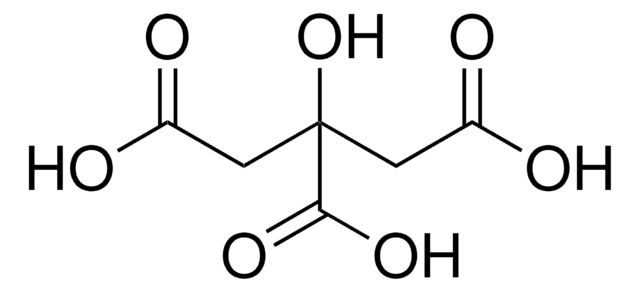推荐产品
等级
pharmaceutical primary standard
API类
theophylline
制造商/商品名称
USP
应用
pharmaceutical (small molecule)
包装形式
neat
SMILES字符串
CN1C(=O)N(C)c2[nH]cnc2C1=O
InChI
1S/C7H8N4O2/c1-10-5-4(8-3-9-5)6(12)11(2)7(10)13/h3H,1-2H3,(H,8,9)
InChI key
ZFXYFBGIUFBOJW-UHFFFAOYSA-N
基因信息
human ... ADORA1(134) , ADORA2A(135) , ADORA2B(136) , ADORA3(140) , PDE3A(5139) , PDE3B(5140) , PDE4A(5141) , PDE4B(5142) , PDE4C(5143) , PDE4D(5144)
正在寻找类似产品? 访问 产品对比指南
一般描述
This product is provided as delivered and specified by the issuing Pharmacopoeia. All information provided in support of this product, including SDS and any product information leaflets have been developed and issued under the Authority of the issuing Pharmacopoeia.For further information and support please go to the website of the issuing Pharmacopoeia.
应用
Theophylline USP reference standard, intended for use in specified quality tests and assays as specified in the USP compendia. Also, for use with USP monographs such as:
- Aminophylline
- Aminophylline Delayed-Release Tablets
- Aminophylline Injection
- Aminophylline Oral Solution
- Aminophylline Rectal Solution
- Aminophylline Tablets
- Dimenhydrinate
生化/生理作用
Phosphodiesterase inhibitor; diuretic; cardiac stimulant; muscle relaxant; asthma medication.
分析说明
These products are for test and assay use only. They are not meant for administration to humans or animals and cannot be used to diagnose, treat, or cure diseases of any kind.
其他说明
Sales restrictions may apply.
相关产品
产品编号
说明
价格
警示用语:
Danger
危险声明
危险分类
Acute Tox. 3 Oral - Repr. 1B
储存分类代码
6.1C - Combustible acute toxic Cat.3 / toxic compounds or compounds which causing chronic effects
WGK
WGK 1
闪点(°F)
Not applicable
闪点(°C)
Not applicable
法规信息
监管及禁止进口产品
Laura López-Cruz et al.
Behavioural brain research, 270, 213-222 (2014-05-27)
Caffeine and theophylline are methylxanthines that are broadly consumed, sometimes at high doses, and act as minor psychostimulants. Both are nonselective adenosine antagonists for A1 and A2A receptors, which are colocalized with dopamine D1 and D2 receptors in striatal areas.
Diego Caccavo et al.
Molecular pharmaceutics, 12(2), 474-483 (2014-12-17)
In this work the behavior of hydrogel-based matrices, the most widespread systems for oral controlled release of pharmaceuticals, has been mathematically described. In addition, the calculations of the model have been validated against a rich set of experimental data obtained
Victoria Boswell-Smith et al.
The Journal of allergy and clinical immunology, 117(6), 1237-1243 (2006-06-06)
Theophylline has been relegated to a second- or even third-line therapy in the treatment of asthma and chronic obstructive pulmonary disease (COPD), behind glucocorticosteroids and beta2-agonists, although recent findings have suggested that theophylline possesses anti-inflammatory and immunomodulatory effects in addition
David J Henderson-Smart et al.
The Cochrane database of systematic reviews, (1)(1), CD000273-CD000273 (2010-01-22)
Recurrent apnea is common in preterm infants, particularly at very early gestational ages. These episodes of loss of effective breathing can lead to hypoxemia and bradycardia, which may be severe enough to require resuscitation including use of positive pressure ventilation.
Amy T Ma et al.
Applied and environmental microbiology, 80(21), 6704-6713 (2014-08-26)
Cyanobacteria are photosynthetic bacteria that are currently being developed as biological production platforms. They derive energy from light and carbon from atmospheric carbon dioxide, and some species can fix atmospheric nitrogen. One advantage of developing cyanobacteria for renewable production of
我们的科学家团队拥有各种研究领域经验,包括生命科学、材料科学、化学合成、色谱、分析及许多其他领域.
联系技术服务部门